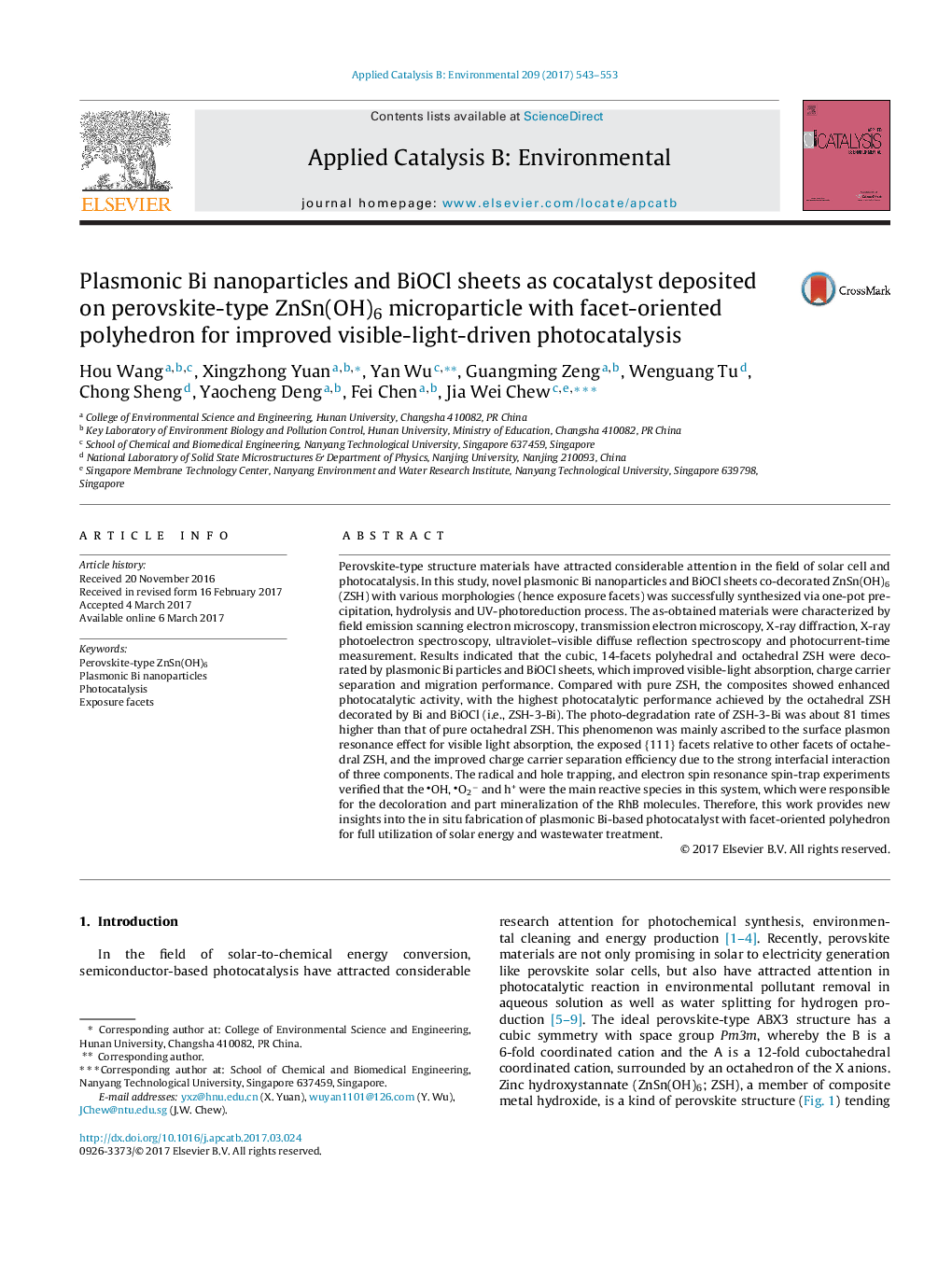| کد مقاله | کد نشریه | سال انتشار | مقاله انگلیسی | نسخه تمام متن |
|---|---|---|---|---|
| 6454227 | 1418811 | 2017 | 11 صفحه PDF | دانلود رایگان |

- ZSH-Bi microparticle was fabricated by precipitation, hydrolysis and UV-photoreduction process.
- The photodegradation rate of ZSH-3-Bi was 81 times higher than that of pure ZSH.
- High photocatalytic activity was due to the SPR of metallic Bi, exposed {111} facet and interfacial interaction.
Perovskite-type structure materials have attracted considerable attention in the field of solar cell and photocatalysis. In this study, novel plasmonic Bi nanoparticles and BiOCl sheets co-decorated ZnSn(OH)6 (ZSH) with various morphologies (hence exposure facets) was successfully synthesized via one-pot precipitation, hydrolysis and UV-photoreduction process. The as-obtained materials were characterized by field emission scanning electron microscopy, transmission electron microscopy, X-ray diffraction, X-ray photoelectron spectroscopy, ultraviolet-visible diffuse reflection spectroscopy and photocurrent-time measurement. Results indicated that the cubic, 14-facets polyhedral and octahedral ZSH were decorated by plasmonic Bi particles and BiOCl sheets, which improved visible-light absorption, charge carrier separation and migration performance. Compared with pure ZSH, the composites showed enhanced photocatalytic activity, with the highest photocatalytic performance achieved by the octahedral ZSH decorated by Bi and BiOCl (i.e., ZSH-3-Bi). The photo-degradation rate of ZSH-3-Bi was about 81 times higher than that of pure octahedral ZSH. This phenomenon was mainly ascribed to the surface plasmon resonance effect for visible light absorption, the exposed {111} facets relative to other facets of octahedral ZSH, and the improved charge carrier separation efficiency due to the strong interfacial interaction of three components. The radical and hole trapping, and electron spin resonance spin-trap experiments verified that the OH, O2â and h+ were the main reactive species in this system, which were responsible for the decoloration and part mineralization of the RhB molecules. Therefore, this work provides new insights into the in situ fabrication of plasmonic Bi-based photocatalyst with facet-oriented polyhedron for full utilization of solar energy and wastewater treatment.
147
Journal: Applied Catalysis B: Environmental - Volume 209, 15 July 2017, Pages 543-553